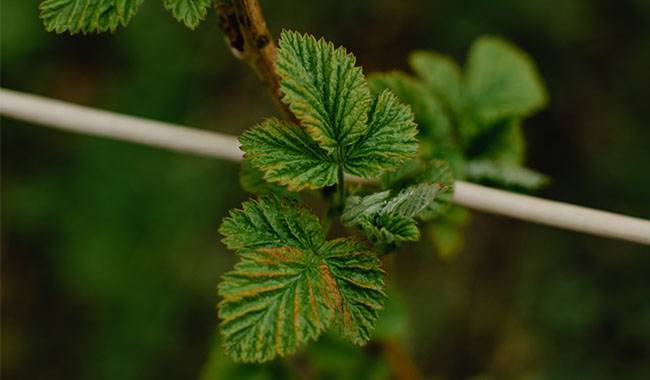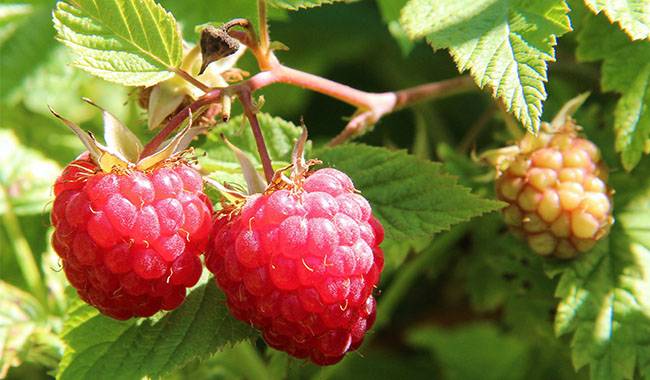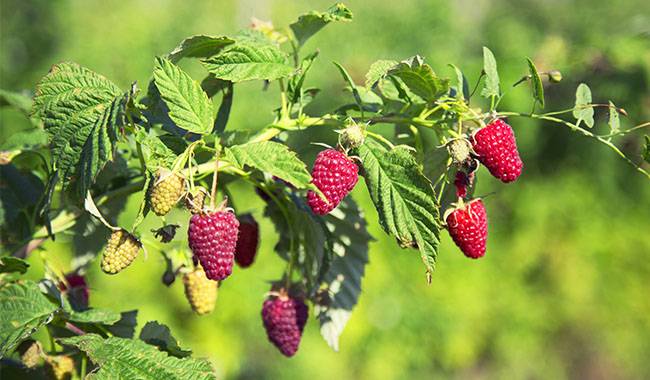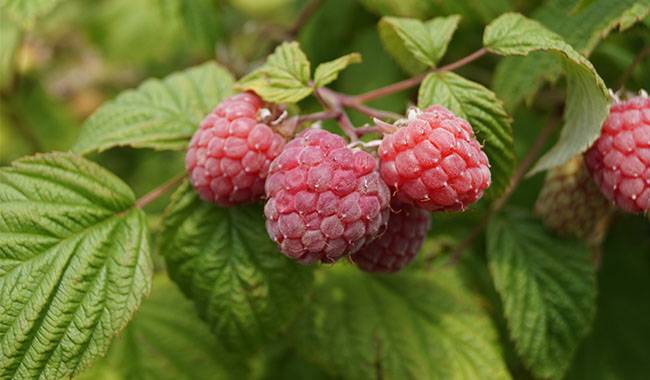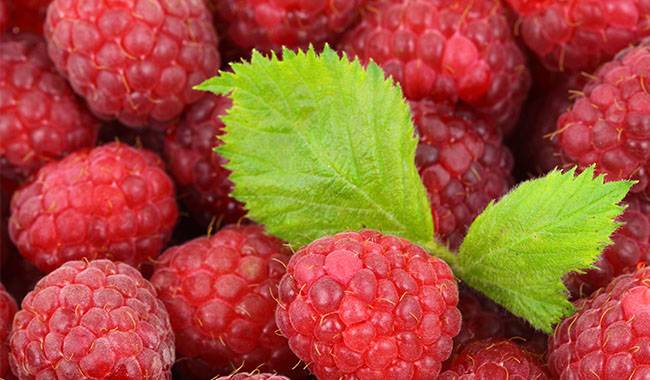
Raspberry grows in probably every garden plot. For someone, it is a “joy” for children, for others, it is a useful jam, a filling for delicious desserts. In any case, growing this culture, we expect it to continue to be productive and long-lived.
However, this plant does not always give us what we want, raspberry diseases often interfere with its abundance.
Here it is necessary to know what to do, because if with some diseases you can and should fight, then in other respects it is best not to waste time and simply replace the planting. In this article, you will learn about the most common diseases of Raspberry and measures to combat them.
Chlorosis
Another name for chlorosis is calcareous, carbonate chlorosis. It often occurs in carbonate soils with a pH equal to or above 7. It occurs because this type of soil prevents the plant from obtaining iron. It appears in the form of lightening of the upper leaves, with the veins remaining green.
What should I do if Raspberry gets iron chlorosis? Improve the air permeability and water permeability of heavy soils. Carry out mulching work. On carbonate soils, abandon the use of manure. Control irrigation uniformity. Apply iron salts on the leaves. Nourish plants with iron sulfate.
Didymella
Didymella’s second name is purple stem spot of raspberries. This disease spreads with infected seedlings. It is usually noticed by gardeners when the disease appears as a peculiar triangular spot on the leaves from the edge of the leaf plate to the middle, bordered by bright yellow stripes.
However, earlier manifestations start as small purple spots at the base of young stems and at petiole attachment. Over time, these spots proliferate and merge, forming rings. Affected tissues turn black, dry, and crack. Second-year shoots, infected with Didymella, dry out from the top in early spring.
What to do? Avoid overgrowth of the plant. Remove fruit buds promptly. Remove infected shoots in a timely manner. Preventive measures Spray with a 1% Bordeaux mixture in spring before bud break and after harvesting.
Mosaic virus
Mosaic virus is a viral disease. It is spread by aphids and planting material. It cannot be cured. Marbling on the leaves. In severe cases, the leaves may be deformed. Berries grow tasteless and lignified. Gradual deterioration of bushes. Affected plants may lag in growth; shrubs wilt in frosty winters.
Yellow wilt
Another name for Verticillosis, VILT. the fungus affects the roots of the plant. It spreads along with the vascular system, clogging it. As a result, the affected Raspberry roots rot and the above-ground parts wilt and wither.
What to do? Promptly remove (together with soil residue) and burn the dead bushes. In case of extensive infestation, sprinkle a 0.2% solution of powdered azole under the roots.
Leaf curl
Depending on the susceptibility of the cultivar to the virus, a variety of symptoms of bulbous root disease can be encountered. In some cultivars, only rounded chlorotic spots with well-defined margins appear. In some cases, the fruit buds are thickened and shortened. The leaves are hard and brittle, dark green, wrinkled, and with downward curved margins.
The veins on them first become vitreous and then die out. By autumn, the color of the leaves turns bronze. The diseased plant does not develop well. The berries form small, lignified, and dry and acidic tasting.
Sometimes the tips of some annual shoots become dry. Flowers form green petals that are not typically small, with elongated stamens and shortened pistils. Their sepals are deformed and enlarged. The skeleton does not develop from such flowers.
In addition, with curly grasses, sometimes another characteristic manifestation can be found – congestion – the formation of peculiar leaf-like protrusions on the underside of the leaves.
What can I do? Unfortunately, this virus cannot be treated. The only control measure is prompt removal (together with the root system) and burning of the entire affected shrub.
Noble rot
More often than not, when the disease appears on the fruit, we have to pay attention to it. Initially, small black spots will appear on the berries, which will soon become larger. If the humidity is high and the weather is cool, a grayish coating will form on the affected tissue – this is the fungal spores. Affected berries are a source of infection for other berries.
If you look closely, you can see black spots on the stalks, young shoots, and leaves. At the same time, they are quite large and the leaves are dark gray in color. On the shoots – elongated.
What to do? In autumn, be sure to remove plant remains, as they retain the infection. In the spring, treat with Bordeaux mixture.
Canker
Immediately after flowering light gray spots appear on young shoots with wide purple margins, gradually merge, darken, dry up and turn into gray longitudinal ulcers. Small cracks appear on the dead tissue and the bark falls off. The lateral branches and leaves on the affected shoots wither. The leaf plates also have grayish spots with purple margins scattered along the leaf veins.
What can I do? Remove the shoots with fruit promptly after harvesting. Thickening of planting is not allowed. Spray with a 1% Bordeaux solution in spring. If defeat is strong, repeat spraying after harvest and clean raspberry diseases shoots.
Rust
The disease can be found first in late spring on young shoots and tender leaves as slightly convex rounded yellow-orange spots. Later, the fungal sporophyte – a light orange emergence – develops on the underside of the leaves. In autumn, you can see a black swelling in their place – this is the overwintering stage of the disease.
What to do? Remove the fruit buds immediately after harvesting. Avoid overgrowth. In the spring, spray Raspberry trees with a 1% Bordeaux solution. If the disease is strong, repeat the spraying after pulp harvest and clean the Raspberry bed of diseased shoots.
Pollen-borne viruses
The pollen-borne virus is a physiological disease. It can be detected at harvest time. Ripe berries are separated into individual bunches – literally shattering in the hand. Exactly what caused this is not known, but crop losses (due to loss of appearance) could reach 30%.
Low humidity combined with insufficient soil moisture, virus infection, or untimely harvesting is thought to be the cause.
Berry burn
Another physiological disease of raspberry berries, the second name is “berry burn”. It occurs mainly on the tips of shoots that open to the sun. But the causes of this phenomenon are not only sunburn but also insufficient moisture.
Dear reader, in this article we have considered the most common Raspberry diseases, but in fact, there are many more. We draw your attention to the fact that proper placement and careful care of your Raspberry tree will help to minimize the risk of any raspberry diseases. Good luck with your harvest!




